Putting Serta & Sealy to Sleep: How Ecommerce Startups like Casper are Disrupting the Mattress Industry
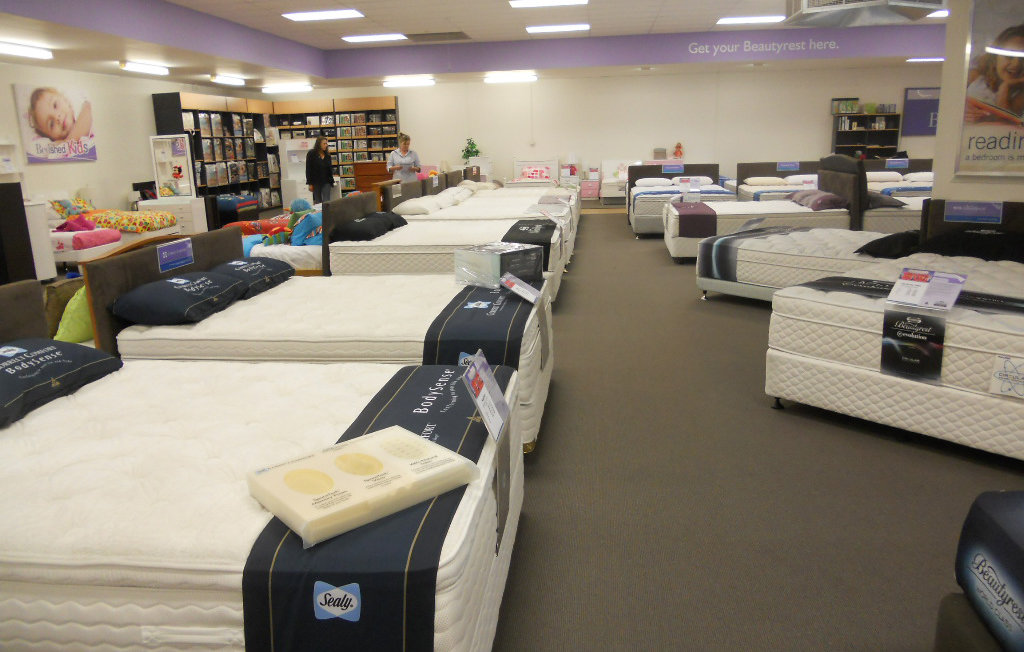
This post was recently updated from its previous version published in 2015.
The mattress.
Quite possibly the most perfect illustration of the differences between Millennials and Baby Boomers.
The mattress as we know it today was born when a new consumer-led economy boomed after World War II. The idea of “moving to the suburbs” spawned the invention of more consumer products, one of those being the “new” mattress.
Thanks to successful advertising campaigns, Baby boomers bought into the product and made the metal spring mattress their standard. Since then, variations like latex and memory foam have been added to mattresses, but the metal spring design still has a strong presence.
Many products like the mattress tend to stick around because up until recently, the majority of the United States population was made up of Baby Boomers.
And, since they’re characterized as not liking change, many things have stayed the same. That is, until Millennials surpassed them in population and traditional industries have begun to be disrupted.
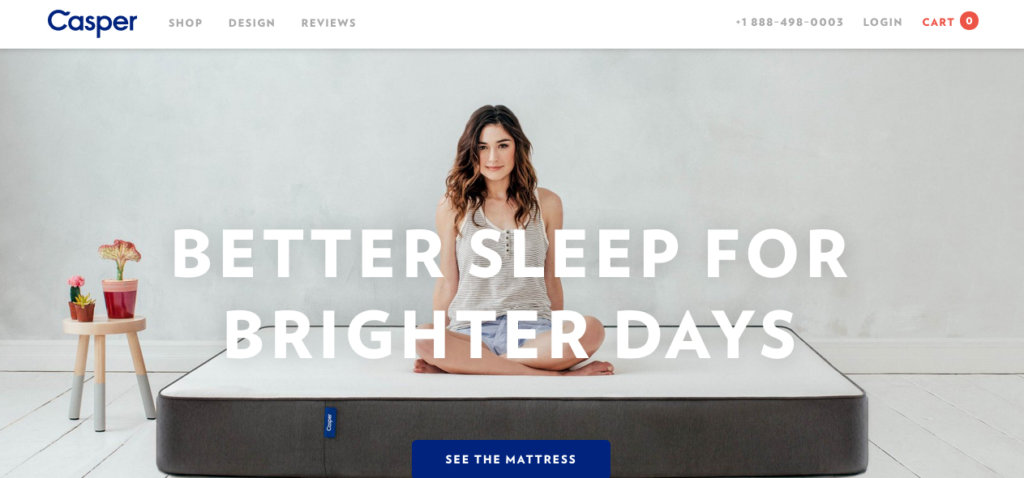
“Disruption” is a word that is thrown around a lot in startup-land, but the best definition of a truly disruptive product is: “A disruptive product opens up a market that wasn’t being served by offering a simpler, more accessible or more convenient option.” (source)
A disruptive product opens up a market by offering a simpler option.Enter Tuft & Needle, Leesa, Yogabed, Casper, Keesta, and Brooklyn Bedding. These are just a few startups taking over the mattress industry by offering a more simple, accessible and convenient solution than taking a trip to your local mattress store.
They are run by Millennials and are targeting (for the most part) other Millennials. Let’s take a look at how these companies are succeeding in capturing customers in what used to be a dominated market:
[content_upgrade]Wanna know how other fast-growing companies are capturing customers and increasing conversions? Watch our FREE training and you’ll learn how to convert more using your existing website. No extra money toward ads. No website overhaul. Just current traffic. [ Click here to sign up and watch ][/content_upgrade]
Death to Retail
“Here’s a fun game I play. First, I walk into a mattress store and ask what’s on sale. Then, I throw my hands in the air and shout along with the salesman, ‘EVERYTHING’S ON SALE!!!!’” – Seth Stevenson, Slate Magazine
If you’ve ever been mattress shopping before, you know there are a few big retailers that dominate the market. (I can count 3 Sleepy’s locations in a 5 mile radius of my Chicago apartment!)
These retailers are dominating the market because of their “traditional” business plan, which revolves around optimizing the distribution process. Meaning, the company strives to decrease production costs as much as possible and focuses on maximizing profit through distribution, which can be direct-to-consumer, wholesale, and/or retail.
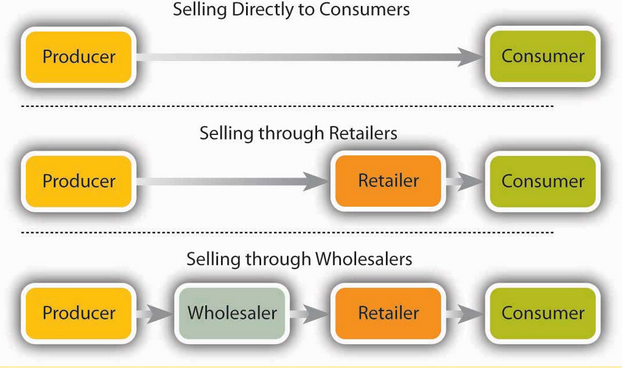
The ridiculous part of this traditional model is the markup. Between the point of production and final sale, mattresses are marked up anywhere from 6-12 times! Good if you work for Sleepy’s on commission, bad if you’re moving into a new apartment in Manhattan where your monthly rent is near double the cost of your traditional mattress.
Mattresses are typically marked up 6-12 times! @tuftandneedleThe traditional mattress business model may be proven and successful, but other startups are putting a new lens on distribution and proving it successful and just as profitable (if not more so).
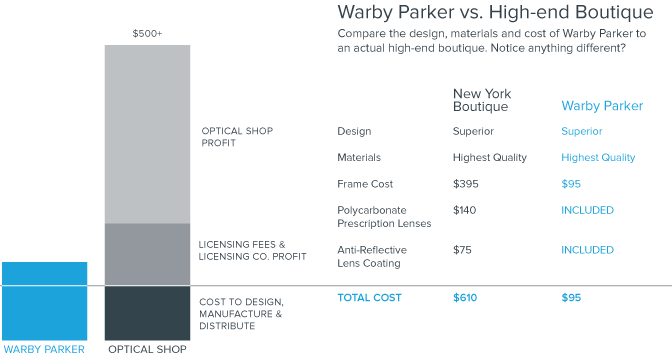
Like Warby Parker and Bonobos (two of the first disruptors of the traditional distribution of eyewear and apparel), mattress companies like Tuft & Needle and Leesa have figured out how to “skip the middleman” and bring their product direct-to-consumer while maintaining extremely attractive margins.
Tuft & Needle, for example, takes their mattress from manufacturing and applies a minimum markup before selling to consumer. They state proudly on their website that the true cost of average mattress production is $300 (Their most affordable mattress is $350).
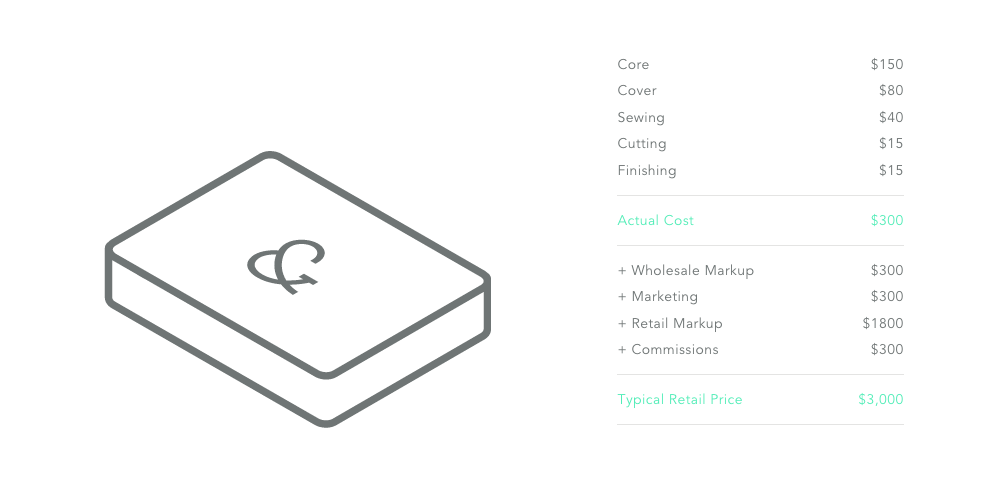
Additionally, this business model allows the company to have minimal inventory. An owner of a traditional mattress business cannot only lose money in selling at a reduced price to wholesalers or retailers, but can also lose money in inventory if they produce too many mattresses that have no guaranteed home.
Enhance Your Value Proposition
Now let’s take a look at the product itself: quite possibly the most boring, uninteresting, expensive, and absolutely necessary product a human purchases.
In the past, mattresses have undergone many product variations. They’ve added multiple layers of foam, optimized their springs, and even traded foam for water!
All of those variations were purely sales-driven, not actual product transformations that improved the quality of the product performance.
In other words, it’s all marketing.
According to an article published on Slate.com, all of the big-name mattress brands get their inner parts from the same company, Leggett and Platt, and the brands simply rename each model for different retail locations.
By confusing the consumer, they’ve successfully made comparison of mattresses impossible. How could the consumer possibly compare “Hybrid Coil” with “Recharge Shakespeare”?
That leads us to the good old value proposition.
Traditional mattress brands rely on vanity “improvements” or additions to their product in order to differentiate it and make it exciting to the consumer. But, It still seems that even after consumers are presented with the many different options, they purchase because they are overwhelmed, not because they want to buy.
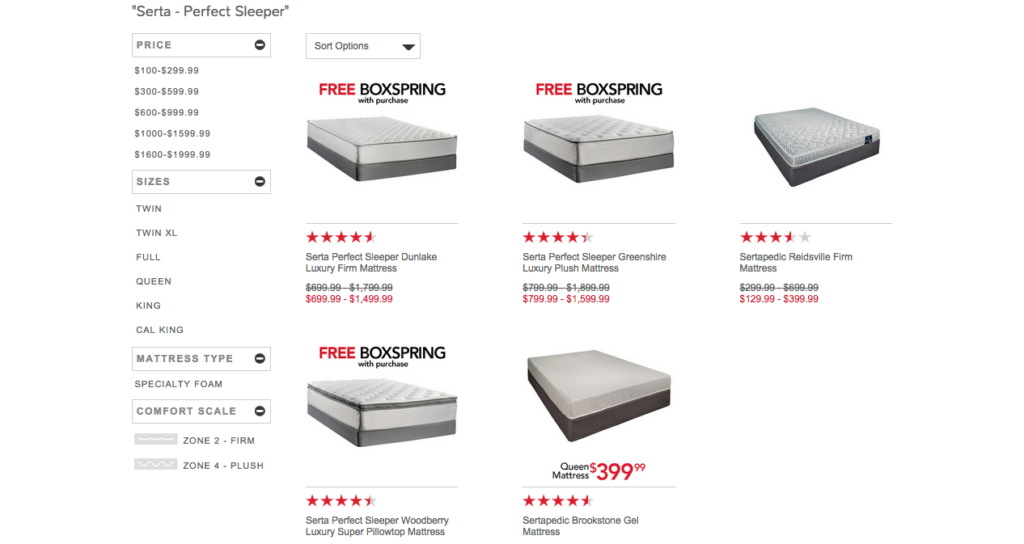
This is where brands like Tuft & Needle, Casper, and Yogabed swoop in to save the day. Their value proposition lies in their product’s simplicity.
For example, Yogabed offers only one mattress – the only variation being the size. In contrast, when you look at Serta mattresses on Sleepys.com (above), not only are there three categories for Serta, but each category has its own variations.
To today’s consumer, Yogabed wins because they make the purchasing decision easy and painless.
In short: They succeed in decision mitigation.
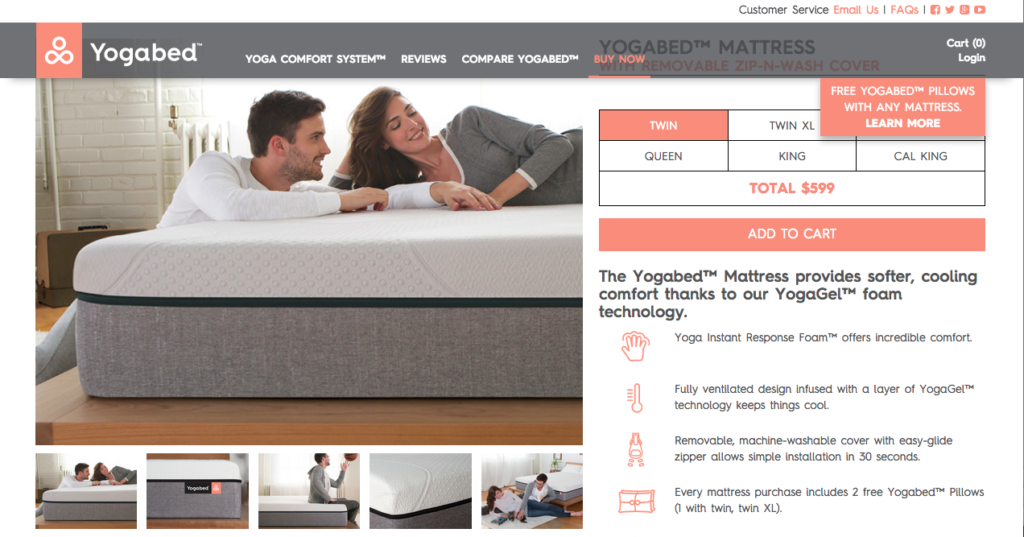
This is not unlike successful companies who have taken an overwhelming experience and simplified them into a monthly subscription box. For example, Birchbox provides one box per month of curated personal care products chosen specifically for the customer, eliminating the dizzying amount of products to choose from. Easy and painless: This trend is working for a reason.
Is Your Business Model Old School?
Even if your ecommerce business can’t get into the one-product model, you should take some time to analyze how you might simplify things.
For example, can you bundle your products to make your customer’s shopping experience easier, and help with decision mitigation?
Another way to simplify your business model: focus on what you do best. Define what your best-performing product is, and create a targeted campaign toward that one product. Because you only have data surrounding one product, the metrics that need improvement are much easier to spot.
The role of a CEO is to simplify the complexity and stick to a few themes. @tim_cookThe New Face of Marketing
One of the biggest challenges for “new” mattress companies is product differentiation. How are they supposed to market one of the most utilitarian products that exists?
They’ve effectively deployed strategies like influencer marketing, successful packaging, and optimizing their value proposition to make their mattresses attractive to today’s ecommerce customer.
Let’s look at a few examples:
Value Proposition
We’ve written before about the importance of solidifying and revisiting your brand’s value proposition, and that’s especially true if you’re selling in a competitive market.
For brands to compete in this new mattress ecommerce space, they have to define why their product is different and how it performs better.
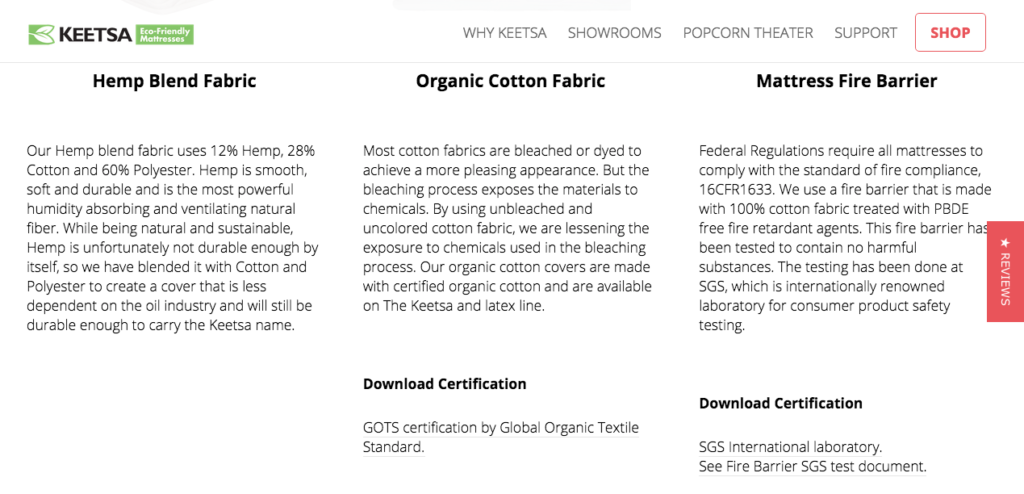
The Keetsa mattress is a perfect example. Their value proposition lies in the eco-friendliness of their product. With organic products being in high demand, Keetsa was smart to make this a defining element of their mattresses. Not only is their product eco-friendly, but their delivery and packaging also follow “green” rules.
A customer base looking for certified organic fabric exists in other industries like apparel and home goods, and now this demand is spilling over into the sleep space.
Keetsa found a way to make themselves different than Casper and Tuft & Needle, and are capturing sales from the organic and green-focused segment of the market.
Influencer Marketing via Social Media
According to a McKinsey Study, marketing-inspired word-of-mouth generates more than twice the sales of paid advertising. And, these customers have a 37% higher retention rate. (source)
Word-of-mouth generates 2x sales of paid ads & 37% higher retention rate @kwong47 @forbesLike other successful startups leveraging social media influencers, Casper and Brooklyn Bedding are piggy-backing on a couple of celebrity Instagram accounts. I couldn’t find any documentation of Casper making a deal with Kylie Jenner (a Shopify Plus customer herself) for posting this image to her Instagram following of 33.7 million people (!), but it was certainly noteworthy.
Imagine getting your product in front of 33 million people through an “influential” source.
Similarly, Brooklyn Bedding posted an image of Kevin Jonas and wife unboxing their new mattress:
Welcome the newest member to the #bestmattressever band. @kevinjonas A photo posted by BrooklynBedding (@brooklynbedding) on
In either case, by showing their product through the “real life” lens of celebrities, these brands are establishing a certain credibility with the celebrities’ audience.
Even though many of Kylie Jenner’s fans probably didn’t run out and buy a Casper mattress, it’s guaranteed they clicked on the link in the caption to find out exactly what @casper is.
Plus, since everything she touches seems to turn to gold, my guess is that this was a solid endorsement for Casper.
Unboxing Isn’t Just For Toys
You’ve heard of the “unboxing” phenomenon, right?
It’s the trend of watching other people open things on YouTube. The highest paid YouTube earner of 2014 raked in $5 million solely by videoing herself unboxing Disney toys. (Make you wanna quit your day job, too?)
Google reports that 62% of people watching unboxing videos are actually researching a potential product purchase. (source) Brands have heard this, seen the stats on unboxing videos and taken note.
62% of people watching unboxing videos are researching a purchaseThere’s something about the physical act of opening a package that still excites customers and brands should take advantage of it! In one of his posts for Shopify, Richard Lazazzera cited this quote about the importance of the unboxing experience:
“The value of premium packaging extends far beyond the customer experience into residual marketing effects. The experience goes beyond the online order to when the customer actually opens the beautifully wrapped package and shares that experience across social networks. That act of online and social recommendations drives loyalty from your customers and promotes brand awareness.” – Maria Haggerty, CEO of Dotcom Distribution
Of course, the new players in the mattress space are taking note of this phenomenon and jumping in. Tuft & Needle mattresses have a video on their Facebook page showing viewers just how they can unbox their mattress.
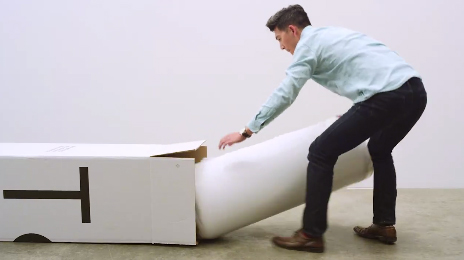
And this video, featuring a couple unboxing their Casper mattress, does a good job of showing the visual difference between the boxed mattress and a regular mattress. It’s been viewed over 170,000 times!
But, the couple in the video wouldn’t even be creating a video about their Casper product if it didn’t come in the slim, sleek box that it does… Proof that packaging is another channel to extend your marketing and nurture your customer relationships.
Packaging happens to be one of the most under-utilized marketing opportunities for merchants @RichardABLSWhat to Take Away from the Disruptors
Though your product may not be “disrupting” your industry, you can mimic the strategy of these companies by asking yourself the same questions they asked themselves:
- “Why is [x] brand dominating our market?”
- “How can I differentiate my product from our main competitor’s?”
- “What holes does the business model of the biggest player have, and how can I fill those holes to capture those customers?”
Even by making an incremental change based on the above analysis, you can capture more sales.
The truth is, we’re not in the 50’s anymore. Many elements of our society operate around strategies and marketing that have become commonplace, but were invented and applied in a different time for different people.
Slowly but surely, these antiquated elements will degrade and be taken over by a newer (and hopefully better) train of thought. We’re seeing it in many facets of American culture, and business is sure to follow. Let’s just hope the baby boomers don’t revolt!
How Can You Apply These Strategies to Your Own Business?
Wrapping your brain around how to take away some of these tactics and apply them to your own business strategy can be tough if you do it alone.
Our CEO, Allen, has set aside some time to have a FREE, 45-minute strategy call with you to discuss what you’re struggling with in your business and how you can implement new strategies to convert more.
If you’d like to book a call with Allen, click below! You just pick a time and date that works best for you, then fill out a short application. It’ll take you 5 minutes, tops.







